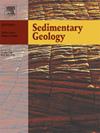Size does not matter: Glacial record on quartz grains from Pleistocene glacial deposits in Tatra Mts. (Western Carpathians) revealed by scanning electron microscopy
IF 2.9
2区 地球科学
Q1 GEOLOGY
引用次数: 0
Abstract
Microtextures on sand-sized quartz grains can indicate their depositional environments. Glacial tills typically contain grains with abrasion and crushing microtextures, which are considered most intense in subglacial settings. These microtextures were previously thought to vary with ice thickness, transport distance, and basal shear stress. However, the conditions necessary to modify quartz grain morphology in glacial environments remain unclear. In this study, we show that glacier parameters do not directly control quartz grain comminution. We analyzed tills deposited before, during, and after the Last Glacial Maximum (LGM) from five Pleistocene glacial systems in the Tatra Mts. (Western Carpathians), identifying glacially-induced microtextures. The frequency of grains with abrasion and crushing microtextures does not correlate with glacier length (2.3–13.4 km), maximum ice thickness (100–420 m), or basal shear stress (73–151 kPa). We further demonstrate that at least two glacial stages (pre-LGM and LGM) can be distinguished within a single sample based on microtextures preservation (freshness). Additionally, we describe a newly recognized microtexture type: the rosette fracture. Our findings suggest that abrasion and crushing microtextures in warm-based glaciers are primarily influenced by substratum lithology, sediment texture, and till origin, rather than glacier size or dynamics. Even small glaciers (1–2 km2) with short transport paths (2–3 km) are capable of effectively abrading and fracturing quartz grains. Under favorable conditions, well-preserved glacial microtextures from Middle Pleistocene mountain glaciers can still be detected. Detailed SEM analysis thus provides valuable insights into past glaciations and the minimum number of glacial cycles, even in moderately glaciated mountain regions.
尺寸无关紧要:扫描电镜显示的喀尔巴阡山脉(西喀尔巴阡山脉)塔特拉山更新世冰川沉积物中石英颗粒的冰川记录
砂级石英颗粒的显微结构可以指示其沉积环境。冰碛物通常含有具有磨损和破碎微结构的颗粒,这种颗粒在冰下环境中被认为是最强烈的。这些微结构以前被认为随冰的厚度、运输距离和基底剪应力而变化。然而,在冰川环境中改变石英颗粒形态的必要条件尚不清楚。在这项研究中,我们发现冰川参数并不直接控制石英颗粒的粉碎。本文分析了喀尔巴阡山脉5个更新世冰川系统在末次盛冰期(LGM)之前、期间和之后沉积的沉积物,确定了冰川诱导的微结构。具有磨损和破碎微结构的颗粒出现频率与冰川长度(2.3-13.4 km)、最大冰厚(100-420 m)或基底剪应力(73-151 kPa)无关。我们进一步证明,基于微纹理保存(新鲜度),可以在单个样品中区分至少两个冰期(前LGM和LGM)。此外,我们还描述了一种新发现的显微结构类型:玫瑰花状骨折。我们的研究结果表明,暖基冰川的磨损和破碎微结构主要受基质岩性、沉积物结构和till起源的影响,而不是冰川大小或动力学。即使是运输路径较短(2-3公里)的小冰川(1-2平方公里)也能有效地磨碎和破碎石英颗粒。在有利条件下,中更新世山地冰川中保存完好的冰川微结构仍可被探测到。因此,详细的扫描电镜分析对过去的冰期和冰期旋回的最小数量提供了有价值的见解,即使在适度冰川覆盖的山区也是如此。
本文章由计算机程序翻译,如有差异,请以英文原文为准。
求助全文
约1分钟内获得全文
求助全文
来源期刊

Sedimentary Geology
地学-地质学
CiteScore
5.10
自引率
7.10%
发文量
133
审稿时长
32 days
期刊介绍:
Sedimentary Geology is a journal that rapidly publishes high quality, original research and review papers that cover all aspects of sediments and sedimentary rocks at all spatial and temporal scales. Submitted papers must make a significant contribution to the field of study and must place the research in a broad context, so that it is of interest to the diverse, international readership of the journal. Papers that are largely descriptive in nature, of limited scope or local geographical significance, or based on limited data will not be considered for publication.
 求助内容:
求助内容: 应助结果提醒方式:
应助结果提醒方式:


